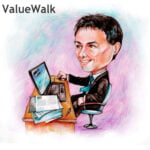The Price All Investors Pay for Benchmarking, AdvisorPerspectives
December 23, 2014
by Michael Edesess
As the Financial Times article states, “Benchmarking therefore gives managers a huge incentive to stay fully weighted in large, risky securities. This eliminates any risk premium these stocks may have had, and leads to the inversion of risk and return.”
Just the revelation that the practice of benchmarking may have as much or more undue influence on market prices as any other factor is enough to make their research give us pause. We should have known of course, but sometimes things that are as plain as the nose on your face do not become plain until you look straight at them.
The Buffa et al. model not only determines securities prices endogenously. It also determines the optimal manager fee contract – optimal in the sense that it should be the one agreed upon by manager and client if they have symmetric information. Not only that but if they don’t have symmetric information – if there are “agency frictions,” with the manager being the agent and the client the principal – then it determines an optimal strategy for the manager to “shirk.” Shirking means that the manager does something to put a little extra in his pocket at the expense of the client, like routing trades to high-commission brokers who give the manager a perk in exchange for the favor, even if it’s only free lunches.
The value of thought experiments formulated in mathematics
I am often highly critical of mathematics as it is used in finance. Perhaps it is therefore incumbent on me to explain why this paper is different. The main reason is that it is sufficiently rigorous and well-formulated with clear definitions of all the terms. It can be checked thoroughly, even if with great effort and difficulty. Its assumptions seem as realistic as they can be and still enable the mathematics to be tractable. Of course, if tractability of the math were the first objective and realism were completely subordinated to that objective that would be a black mark against it. But this research doesn’t exceed an acceptable ratio of unrealistic assumptions to mathematical tractability.
The important thing is that the research is valuable as a contribution to thought experimentation. Ideally, research that relies heavily on mathematics should be understandable in non-mathematical terms. The Buffa et al. paper falls short on that measure, but that may be because not enough efforts have been made yet to explain it. The miraculous thing about mathematical formulation is that sometimes you discover real-world relationships by working through the mathematics that you would not have thought of otherwise. This happens more often in physical sciences than in economics, but it can happen in economics too. One should not jump to conclusions until it has all been checked out, the mathematics against the reality, and the reality against the mathematics.
Why benchmark against a market index anyway?
The Financial Times article concludes that the Buffa et al. paper makes “a strong case against benchmarking.” It then asks, “But what can replace it? In most industries, benchmarking is good practice. If funds are not to benchmark against their peers, or against an index, then how should we judge them?”
A good way to look at this may be to borrow a leaf from the field of industrial engineering. W. Edwards Deming was a statistician and product quality expert who became one of the most important consultants to post-war Japan in its ultimately successful effort to transform a ravaged country producing cheap, low-quality goods into one of the most successful economies in the history of the earth.











